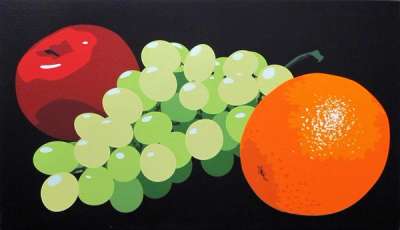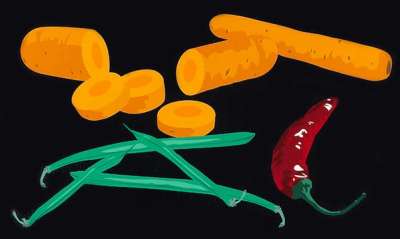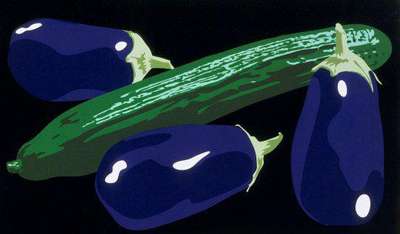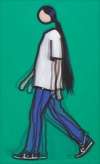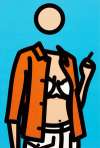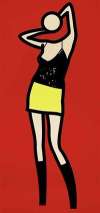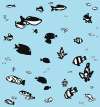Still
Life
Reminiscent of 17th-century Dutch still life painting in its allusion to realism and starkly contrasted dark background, Julian Opie's Still Life prints bring the art historical genre sharply up to date through his bold, graphic style. Opie parallels the artificial nature of the items represented with his methods and style of working that defy the presence of the artist’s hand.
Julian Opie Still Life For sale
Still Life Value (5 Years)
Julian Opie's Still Life series has historically shown more modest results compared with the artist’s wider oeuvre, with auction prices ranging from £500 to £3873. Average annual growth has remained modest at -7.59%, with certain works seeing declines in value. Over 29 total auction appearances, average selling prices have held steady around £1401. This series appeals to collectors seeking accessible entry points into Julian Opie’s print market.
Still Life Market value
Auction Results
| Artwork | Auction Date | Auction House | Return to Seller | Hammer Price | Buyer Paid |
|---|---|---|---|---|---|
 Still Life With Apple, Orange And Grapes Julian Opie Signed Print | 18 Sept 2024 | Tate Ward Auctions | £383 | £450 | £650 |
 Still Life With Bananas, Aubergines And Green Beans Julian Opie Signed Print | 18 Sept 2024 | Tate Ward Auctions | £383 | £450 | £650 |
 Still Life With Yellow Red And Green Peppers Julian Opie Signed Print | 18 Sept 2024 | Tate Ward Auctions | £425 | £500 | £700 |
 Still Life With Aubergines And Cucumber Julian Opie Signed Print | 18 Sept 2024 | Tate Ward Auctions | £383 | £450 | £650 |
 Still Life With Red And Green Apples Julian Opie Signed Print | 26 Sept 2020 | iART | £3,145 | £3,700 | £4,300 |
 Still Life With Mushrooms And Courgettes Julian Opie Signed Print | 11 Jun 2015 | Phillips London | £638 | £750 | £1,000 |
 Still Life With Chestnuts And Leek Julian Opie Signed Print | 22 Jan 2015 | Phillips London | £808 | £950 | £1,250 |
 Still Life With Green Beans Chilli Pepper And Carrots Julian Opie Signed Print | 21 Jan 2015 | Phillips London | £808 | £950 | £1,250 |
Sell Your Art
with Us
with Us
Join Our Network of Collectors. Buy, Sell and Track Demand
Meaning & Analysis
Julian Opie’s Still Life series from 2001 brings together eight still life compositions of fruit and vegetables, all depicted in bright, saturated colours and set against a black backdrop. Much like many of Opie’s works since the 2000s, this series uses very similar titles and compositions for every print.
Working within the established art historical tradition of still life painting, Opie takes the opportunity in his Still Life series to use this subject as a study of colour and tone and explore a more realistic artistic style. Reducing light and shadow into simplified shapes of block colour, this composition toes the line between tradition and contemporaneity in its clever blend of subject matter and style.
Reminiscent of 17th century Dutch still life painting in its allusion to realism and starkly contrasted dark background, Opie presents a twenty-first century version of the classic art historical genre through his use of computer technology, saturated colour and simplified form. Rather than use unusual and morally charged subjects in this series as traditional paintings of the genre would, Opie uses fruit and vegetables found in everyday life to create the subject of these prints.
Throughout his entire career Opie has been interested in engaging with the traditions of art history, notably in his works A Pile of Old Masters (1983) and Eat Dirt, Art History (1983). Engaging with canonical styles of art history, Opie demonstrates his interest not in representing reality but how reality is represented to the viewer. Still Life with Bananas, Aubergine and Green Beans is also indicative of Opie’s claim that the artist and viewers of art will always be constrained by the principles and traditions of art history. Of this in relation to his work, Opie has said, “It was an acknowledgement of the hopeless position of the art student in light of art history, but also a rally call not to feel overwhelmed by it.”

